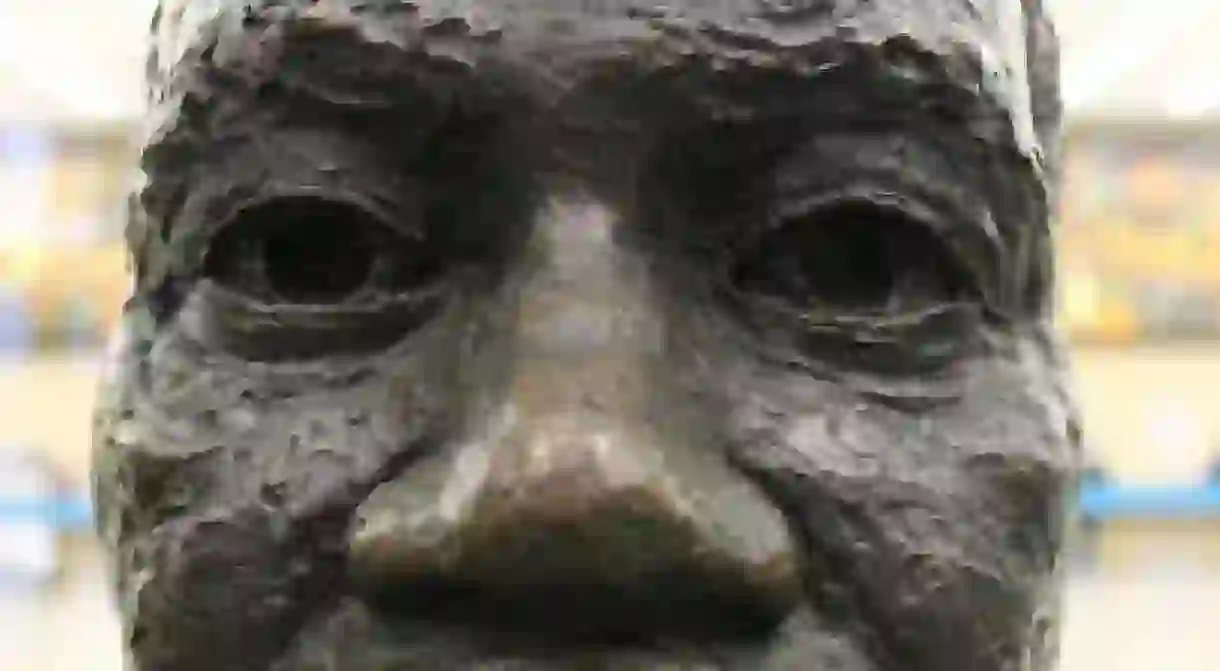Martin Luther King – From Myth To Monument

The newly unveiled Martin Luther King Jr. monument in Washington DC evokes the mythology behind this great figure. Ben Waite considers the man behind the myth.

Washington DC has recently added a new memorial to its already burgeoning supply; it is dedicated to Martin Luther King Jr., a man who is celebrated right across America. His influence on American society is beyond question and he is widely considered to be an American hero. Yet King didn’t always enjoy such an admirable status and his acceptance in orthodox opinion as one of the mainstream historic figures in fact involves some distortion. The monument reflects the myth, yet it also provides an opportunity to re-discover the real man and his true legacy.
Right through his life in the public spotlight, King was a controversial figure. He was hated, loved, respected and dismissed, all in equal measure, and across every imaginable divide. The segregationists of the South were always the most obvious foes. However, King was considered highly dangerous by J Edgar Hoover, famed FBI director; he and his colleagues were frequently subjected to surveillance and threatened with public ruin. He was treated with disdain by many civil rights activists who found his methods to be too meek and apologetic. He was treated warily by otherwise sympathetic white Americans, like the Kennedy brothers, who feared the public disorder that his protests and sermons would bring. Death, however, transformed him.
The dominant image of King in the public mind today is one of a kindly man, whose inherent goodness and moral preaching enabled mainstream America to realise the error of its ways. Understanding how this image has prevailed can be aided greatly through the French Situationist concept of ‘Recuperation’. This involves the reinterpretation of radical or deviant actions in such a way as to bring them into the mainstream and assimilate them within a conventional narrative. As such, King as a historical figure is incorporated into the American dream, a man who helped to extend liberty in the ‘land of liberty’. The other central element of ‘Recuperation’ involves significant whitewash or erasure of elements that are not conducive to the desired picture.
In this case, many of those elements are key to understanding the man as he was and the ongoing value of his message. This is the superb argument of Harvard Sitkoff in King: Pilgrimage to the Mountaintop. King came to see that civil rights could not be simply divorced from other forms of social justice. His ‘dream’ of a harmonious society could not be achieved merely by pronouncements of political equality for black people, but necessitated action on all forms of political domination and economic exploitation. His message was that the realisation of the dream would require ‘basic structural changes in the architecture of American Society’. Furthermore, he understood that justice ‘never rolls in on the wheels of inevitability, but only through the tireless efforts of men’. This led him to non-violent resistance including marches, rallies, public speeches, acts of civil disobedience and the like; carrying his radical message through the confrontation of power.
The mainstream image of King is one that consigns him to the history books: a man whose job has been done and now deserves mere collective platitudes. A closer look shows a life tragically cut short and the unfinished nature of his mission. Figures have recently shown the highest number of Americans living in poverty since records began in 1959. The United States is still mired in foreign wars of choice in the Middle East. Hard line right-wingers in public office threaten to exacerbate many of the problems. Shortly before he was assassinated, King was speaking out against the war in Vietnam, marching with striking bin workers and leading a ‘Poor People’s Campaign’ targeting the Federal government. If he were alive today, King would surely be at the forefront of protest about the state of American society again. Reviving this true image of the man and acting on his true message would do more than a picturesque memorial ever could.
By Ben Waite













